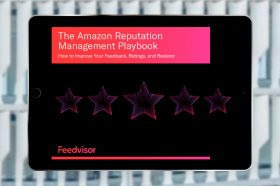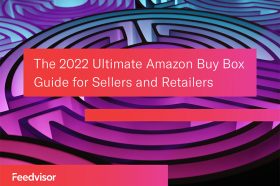University - General Information About Amazon
Amazon Vendor Central

What Is Amazon Vendor Central?
Vendor Central is a portal used to facilitate business between Amazon and private vendors. One of the key aspects of Amazon’s success in the book industry is the platform of selling programs that it provides. These programs welcome both vendors – those who have distribution rights to titles – and Individual Sellers. Vendors sell to Amazon and Amazon, in turn, sells to the buyer, while Individual Sellers pay Amazon a fee to use the Amazon site as a means of selling to buyers directly.
It is a web interface that helps vendors satisfy their customers’ needs, smoothly and efficiently. The Vendor Central portal allows vendors (only those invited by Amazon) to do business with amazon.com. Once set up, the vendors receive payment from Amazon on a monthly basis, on wholesale terms. Before that can happen, of course, the buyer orders from Amazon and pays Amazon, and Amazon ships the merchandise. If the buyer is making the purchase from a vendor, the product page will specify, “In Stock, Shipped and Sold by amazon.com.” This model is similar both to Amazon’s Fulfillment Program and to the self-service consignment program of Amazon Advantage.
Amazon Vendor Central vs. Seller Central
The key difference between sellers and vendors on Amazon is who is actually selling the product. Seller list, price, and market their products themselves. Vendors sell their products to Amazon-employed buyers, who then list and resell the products to Amazon users.
What Is Amazon Seller Central?
Seller Central is the web interface that sellers and brands on Amazon use to sell their products directly to customers. As a marketplace seller, you have two options for fulfilling orders you receive from Amazon’s customers: you can take care of the shipping, customer service, and returns for each order yourself (via FBM or SFP) or you can let Amazon take care of these processes via Fulfillment by Amazon (FBA). Some brands also use Seller Central as a tool to control the messaging of products that are not being sold via Vendor Central.
Stay on top of the latest e-commerce and marketplace trends.
Advantages and Disadvantages of Vendor Central vs. Seller Central
Pros of Vendor Central:
- Customers are very likely to buy your products. Given that you are selling your products as a first-party seller, your product shows up as being “sold by Amazon.” Having that seal of approval can make customers more apt to buy.
- You have many advertising opportunities available. Amazon Marketing Services gives brands multiple options to get their products in front of the right customers and allows vendors to drive demand through campaigns specifically designed to boost traffic to Amazon product pages. While both sellers and vendors can access AMS, Vendor Central users have more developed options when it comes to running MWS advertising campaigns. You can also create enhanced content via Amazon A+ Content pages.
- The business process is less complex with Vendor Central. As a vendor, you will be able to focus on filling purchase orders, billing, and avoiding any chargebacks. As a seller, you will be responsible for sales reconciliation, taxation liabilities, and lost inventory.
- You can avoid fees. Instead of having to pay Amazon seller fees such as costs for referrals, fulfillment, or subscriptions, vendors pay a flat fee which allows them to sell unlimited products for $39.99 a month.
Cons of Vendor Central:
- You do not have pricing control. Amazon can and will adjust pricing at any time based on their aggregated data, which can impact your margins.
- You have specific logistical requirements. Vendors that have trouble maintaining adequate stock levels or fulfilling orders in a timely manner can face significant chargebacks.
- New product launches can be difficult. Amazon has no incentive to purchase a product from you, as they do not know what the demand for the new product looks like just yet.
Pros of Seller Central:
- You have more marketplace control than your vendor counterparts. You can manage your own pricing, customer communication, and fulfillment (unless you are fulfilling via FBA).
- You have access to more analytics. Seller Central provides you with a significant amount of data at no extra charge — which you can, in turn, use to better understand who is buying your products and where.
- You have pricing control. You can automatically match or beat your competitor’s pricing to remain competitive and can adjust your pricing when you would like to.
Cons of Seller Central:
- You are subject to many fulfillment costs. The shipping and/or fulfillment costs involved in selling on Amazon can sometimes limit your ability to sell low-priced items.
- The items are not “sold by Amazon.” Sellers typically see fewer sales than vendors for this reason. For many sellers, the flexibility of the Seller Central function is worth the occasional decrease in sales.
Which One Should You Choose?
Both options have very specific advantages, so you should evaluate based on several variables — the size and location of your business, the level of control you want, your fulfillment method, the number of fees you are willing to pay, your business model, and specific strategies and goals.



